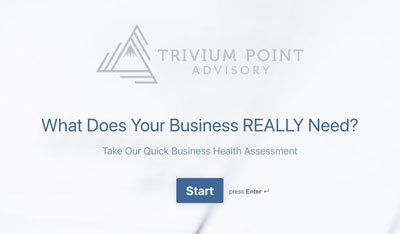With the passage of the federal omnibus bill in December, Congress has unleashed a sequel to the SECURE Act of 2019, which introduced several changes and enhancements to retirement plan rules. The SECURE Act 2.0 builds on that with several more enhancements designed to increase retirement savings opportunities for many Americans.
Here are the key provisions with the most direct impact on retirement savers.
Note: Implementation for each SECURE 2.0 provision varies from being effective immediately, to ramping up in future years. A few even apply retroactively. Many of its newest programs won’t effectively roll out until 2024 or later, giving us time to plan. We’ve noted with each provision when it’s slated to take effect.
- RMD Starting Age Pushed Back
The SECURE Act of 2019 immediately increased the required minimum distribution (RMD) starting age from 70 ½ to 72. The SECURE Act 2.0 increases it further to 73 beginning in 2023, with phased increases to 75 by 2033. There was no change to your ability to further delay taking RMDs from your 401k if you are still working and not a 5% owner.
|
Birth Year |
Impact of SECURE Act 2.0 |
|
< 1951 |
No impact. |
|
1951-1959 |
RMD age pushed back to 73 |
|
1960+ |
RMD age pushed back to 75 |
- IRA Catch-Up Contributions are Inflation Indexed
For many years, the annual limit for IRA catch-up contributions has been stuck at $1,000. In 2022, IRA contributors aged 50 or older were allowed to increase their maximum contribution to $7,000 from $6,000. The SECURE Act 2.0 breaks that $1,000 ceiling by linking the catch-up limit to inflation starting in 2024.
- Increased 401(k) Catch-up Contribution Limit for Ages 60 to 63
Currently, the catch-up contribution limit for 401(k) plans is $7,500 for plan participants aged 50 and older. Starting in 2025, the SECURE Act 2.0 increases the limit for participants aged 60 to 63, allowing catch-up contributions of $10,000 or 50% above the standard catch-up limit, whichever is greater. After 2025, the new catch-up limit will be indexed to inflation.
- Unused 529 Plan Funds may be Rolled into a Roth IRA
Parents saving for college expenses through 529 plans will rejoice over this provision that allows unused funds to be rolled over to a Roth IRA. Currently, the distribution of funds from a 529 plan not needed to cover college expenses is taxed and penalized. Starting in 2024, beneficiaries of a 529 plan will be allowed to roll over up to $35,000 in unused funds over their lifetime to a Roth IRA. Rollovers to a Roth IRA are subject to the annual contribution limits. To be eligible, a 529 account must be established for more than 15 years.
- Expands Automatic Enrollment in Retirement Plans
The Secure Act 2.0 adds more specific guidelines for employers to implement automatic enrollment in newly established 401(k) and 403(b) plans for eligible employees. Employees who don’t opt out of the program will be automatically enrolled with a contribution rate of 3% of their salary, which can go as high as 10%. The contribution amount will automatically increase yearly by one percentage point until the total contribution reaches 15% of salary. The new provision does not apply to established retirement plans.
- Required Minimum Distribution Age is Increased
The SECURE Act of 2019 immediately increased the required minimum distribution (RMD) starting age from 70 ½ to 72. The SECURE Act 2.0 increases it further to 73 beginning in 2023, with phased increases to 75 by 2033.
- IRA Catch-Up Contributions are Inflation Indexed
For many years, the annual limit for IRA catch-up contributions has been stuck at $1,000. In 2022, IRA contributors aged 50 or older were allowed to increase their maximum contribution to $7,000 from $6,000. The SECURE Act 2.0 breaks that $1,000 ceiling by linking the catch-up limit to inflation starting in 2024.
- 401(k) Catch-up Contribution Limit Increased for Ages 60 to 63
Currently, the catch-up contribution limit for 401(k) plans is $7,500 for plan participants aged 50 and older. Starting in 2025, the SECURE Act 2.0 increases the limit for participants aged 60 to 63, allowing catch-up contributions of $10,000 or 50% above the standard catch-up limit, whichever is greater. After 2025, the new catch-up limit will be indexed to inflation.
- Penalty-Free Plan Withdrawals to Cover Emergency Expenses
Starting in 2024, plan participants with unforeseen emergency expenses may withdraw up to $1,000 annually without penalty, though they will still owe taxes. Participants have the option of repaying the distributions within three years. However, during the repayment period, no further emergency withdrawals are allowed.
- Starter 401(k) Plans for Small Businesses
Many of the 65 million Americans not covered by a workplace retirement plan work for a small business that may not be able to provide one due to the costs and regulatory burdens of establishing them. SECURE Act 2.0 removes those obstacles for small businesses by establishing a new “401(k) deferral arrangement.” Many states have instituted these types of plans, but the SECURE Act 2.0 creates a federal solution available to more small employers.
What to Do Now
The SECURE Act 2.0 can be a game-changer for retirement savers and employers that want to expand saving opportunities. Consult with your financial advisor to ensure any changes introduced by the SECURE 2.0 Act are properly incorporated into your retirement plan.






0 Comments